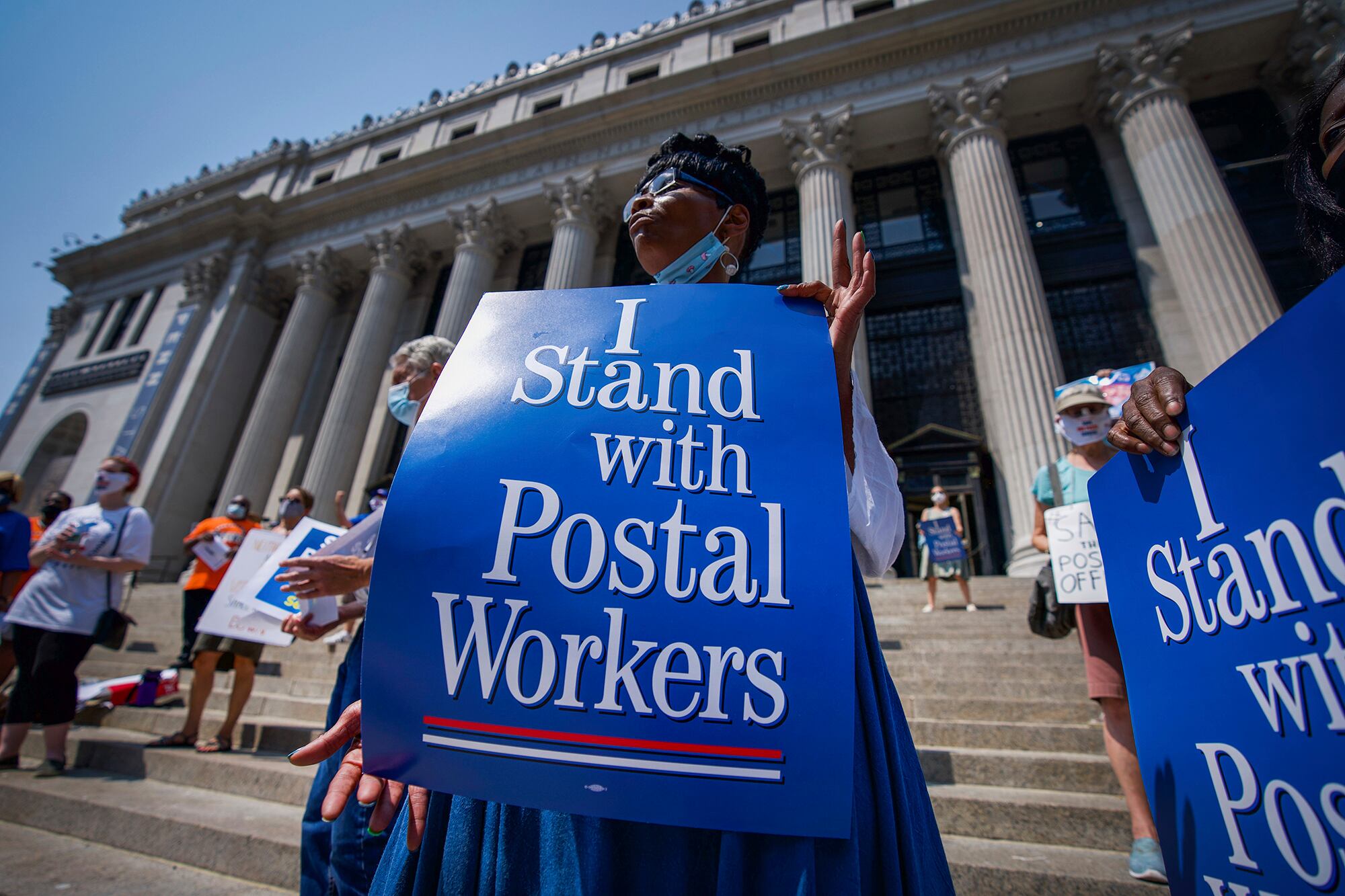Demand for e-commerce and online shopping during the COVID-19 pandemic significantly boosted the U.S. Postal Service’s package revenue and volume during the agency’s busiest time of the year, according to the agency’s first quarter fiscal year 2021 report, released Feb. 9.
Package volume at the agency increased by 25 percent over the same time last year, and revenue on those packages increased by approximately $2.8 billion.
Those package increases, in spite of continued drops in marketing and first-class mail volumes, gave the agency an 11.1 percent revenue increase over last year’s numbers and put the agency at a first quarter income of $727 million, rather than the $387 million loss recorded for the same quarter last year.
RELATED

“The increased postal revenue and operating profits reflect the essential work and value of the USPS over the past year and counting — the pandemic, election and holiday season. Letter carriers have helped tens of millions of Americans shelter safely at home and even vote from home. Perhaps never in its 245 years has the public post office been more indispensable,” said National Association of Letter Carriers President Fredric Rolando in a statement.
“The quarterly report also shows the underlying strength of the postal business model while making clear the need for postal reform to address the artificial red ink caused by the 2006 congressional mandate that the USPS — alone among all U.S. companies and agencies — pre-fund future retiree benefits.”
But in spite of the COVID-19 pandemic causing more people to send packages through USPS, the coronavirus also caused significant operational challenges for the agency.
More packages during the holiday season and sick employees needing to take paid time off resulted in increased work and overtime hours at the agency to make up the difference, causing compensation and benefits costs to rise $771 million.
Transportation costs for the agency increased by $204 million due to the pandemic’s impact on available shipping methods and increased restrictions on certain travel.
The agency also continued to experience increased costs from retirement benefits, an uncontrollable expense for the agency, as it is the only government entity required to prefund its retirement expenses when a new employee enters service.
“While our positive financial results this quarter are certainly welcome, we continue to face systemic imbalances that make our current operating model unsustainable, and the economic impacts of the COVID-19 pandemic will continue to challenge the organization,” said Postmaster General and CEO Louis DeJoy in a news release.
“It is essential that the Postal Service adopts comprehensive reforms so that we are able to meet the changing needs of our business and residential customers, and ensure our ability to provide reliable, universal mail and package delivery for all Americans.”
DeJoy’s reforms have faced extensive criticism from Congress and postal employees, as many coincided with widespread service slowdowns just prior to the November 2020 election, when mail-in ballots became especially prevalent.
USPS officials also worry that the package revenues resulting from the pandemic will not hold, as the nation returns to normal operations and in-person shopping becomes more viable.
“While the record package volume we saw during the holiday season was encouraging, we are still operating in unprecedented times as we navigate the impacts of the COVID-19 pandemic, and the results from the past quarter may not be sustainable,” said Chief Financial Officer Joseph Corbett.
“Our mail volumes continue to decline due to the pandemic, despite a record 2.7 billion political and election mail pieces associated with the general election. Our regulator’s announcement granting additional pricing flexibility and authority could provide some respite, however, we continue to face imbalances in our business model that must be fixed through legislative change.”
Jessie Bur covers federal IT and management.





